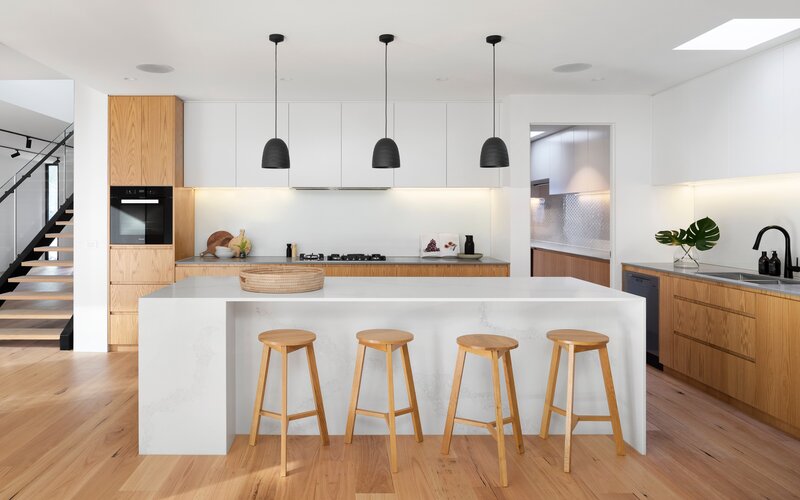Investor activity remains below long-term averages due to 'inequitable lending conditions', which could put further strain on the already-tight rental market according to the Property Investment Professionals of Australia (PIPA).
From 2007 to 2017, investors made up roughly 35% of the market, but since then, activity has been 'constrained'.
"The volume of investors has been trending up over the past few months, but the fact that they were generally stuck on the sidelines for a number of years means there is a significant rental property deficit in most parts of the nation," PIPA Chairman Peter Koulizos said.
The national vacancy rate is now 1.7%, according to SQM Research, while Adelaide, Perth and Hobart have vacancy rates of just 0.5% to 0.6%.
According to REA Group's latest report, rental listings are down 12.9% year-on-year, which has kept the rental market competitive.
Mr Koulizos said the supply-and-demand imbalance between tenants and available rental properties has been tightening since stricter investor lending restrictions took effect in 2017.
This has been causing rent prices to increase 'strongly', supported by CoreLogic's latest release which revealed national rent prices have increased at the fastest rate since 2008.
He said that this is creating financial and housing problems for many people.
"Since December 2016, national weekly house rents have increased by nearly 24% and national weekly unit rents have jumped by 20%, according to SQM Research," Mr Koulizos said.
"As we know, wage growth has been mostly stagnant over the same period of time, so how are people expected to find the additional funds that are required to lease a property?"
Regional renters hit hardest by housing shortages
Total rental listings are 40% below pre-pandemic levels in regional areas according to REA Group's PropTrack Rental Listings Report - another indication of the 'tough' conditions for regional renters.
Specifically, regional renters in WA and NSW are faced with tight conditions.
New listings in regional WA dropped 8.5% this month, and listings in regional NSW fell 4.9% where they sit just above their historic low.
Angus Moore, PropTrack economist and report author, said rental stock is low as a byproduct of two years of restrictions.
"The COVID-driven migration to the regions has already absorbed a lot of the available rental stock. As a result, renters searching in regional areas face particularly tight conditions and a low level of available stock to choose from," Mr Moore said.
"Total listings in regional areas are more than 40% below their pre-pandemic level. The decline in available supply has been widespread across the states and territories."
Melbourne and Canberra welcome wave of new listings
As restrictions ended in Melbourne, Canberra, and Sydney, an uptick in new listings was observed.
Melbourne and Canberra saw listings increase by 16.7% and 22% month-on-month respectively.
"Easing of restrictions in Melbourne and Canberra buoyed the rental market in September, bringing more stock to rental seekers who have been patiently waiting to find a property," Mr Moore said.
"We expect to see ongoing strength in new listings in October in Melbourne and Canberra as the full effect of these changes flows through."
New listings were also up 1.8% in Sydney, and 0.2% in Darwin amid the typical seasonal drop off as the wet season begins.
As a result of the seasonal trend, new listings are down in Brisbane (-2.3%); Adelaide (-4.5%); Perth (7.9%); and Hobart (-16.8) over the past month.
Is it time for government action?
With a new round of lending restrictions pending, Mr Koulizos said it's time that all levels of government did more to provide accommodation for its population.
"Spending on social housing has been reducing for decades, plus affordable housing schemes seem to be here today and gone tomorrow, depending on which political party is in power," he said.
"The National Rental Affordability Scheme, or NRAS, could have helped to prevent the current rental affordability crisis, but it was axed in 2014 after just six years, and has not been replaced with any similar initiative as far as I am aware.
"When the next wave of overseas migrants land here in coming years, where are they going to live? Migrant accommodation camps like the 1950s? Something needs to be done – and it needs to be done now."
Image by Goh Rhy Yan on Unsplash

Ready, Set, Buy!
Learn everything you need to know about buying property – from choosing the right property and home loan, to the purchasing process, tips to save money and more!
With bonus Q&A sheet and Crossword!



 Harry O'Sullivan
Harry O'Sullivan
 Bea Garcia
Bea Garcia
 Denise Raward
Denise Raward
 Rachel Horan
Rachel Horan


